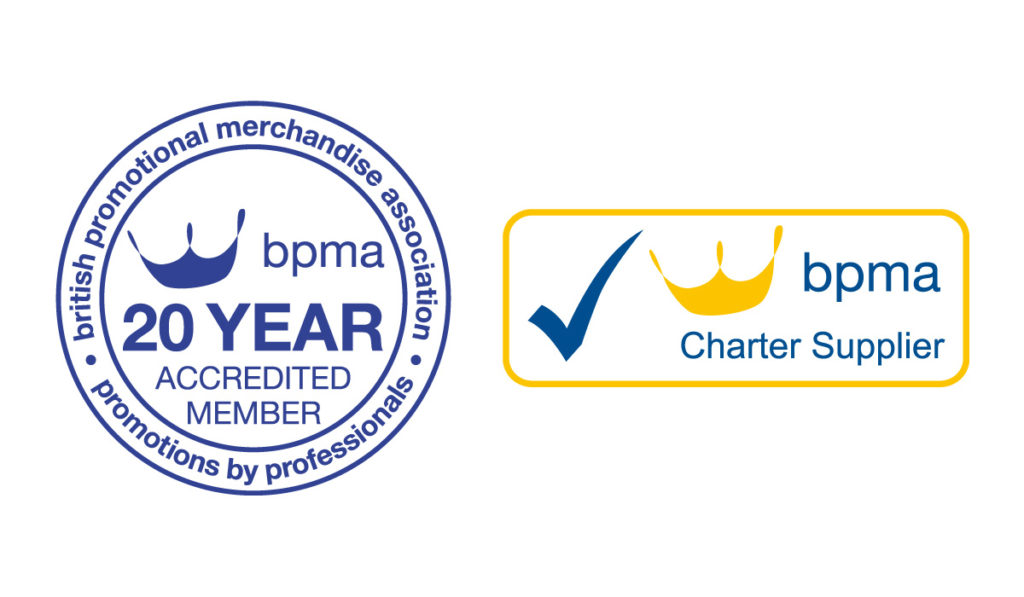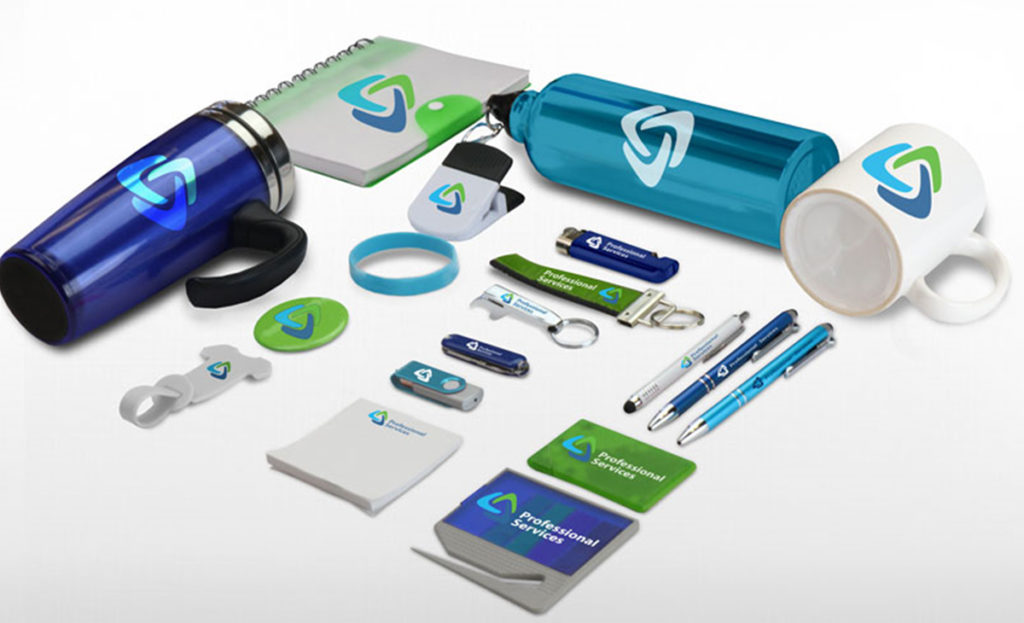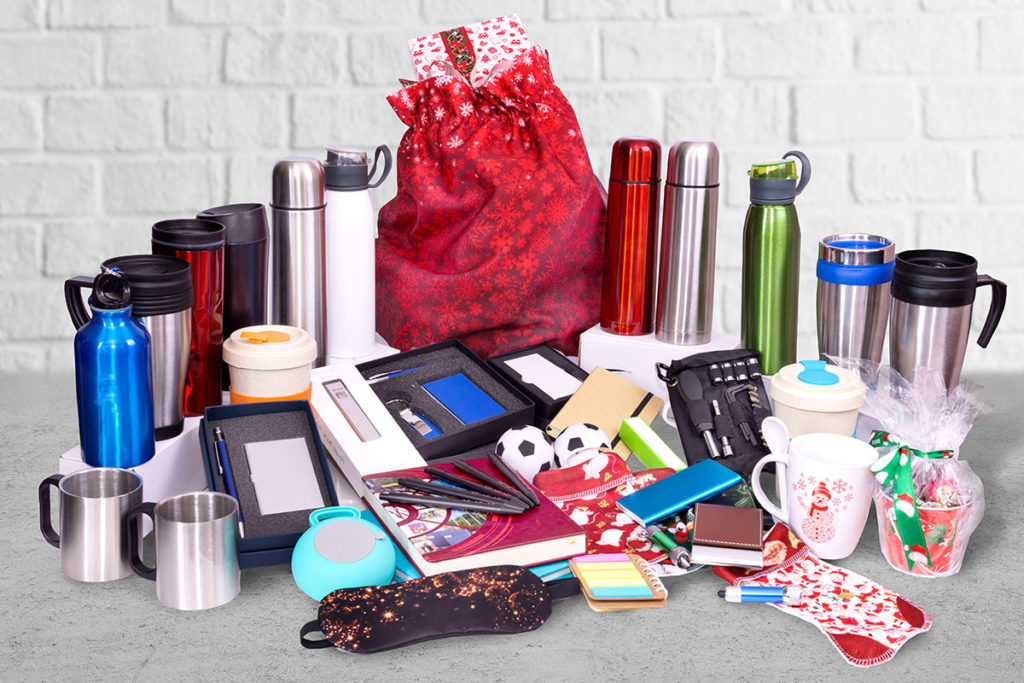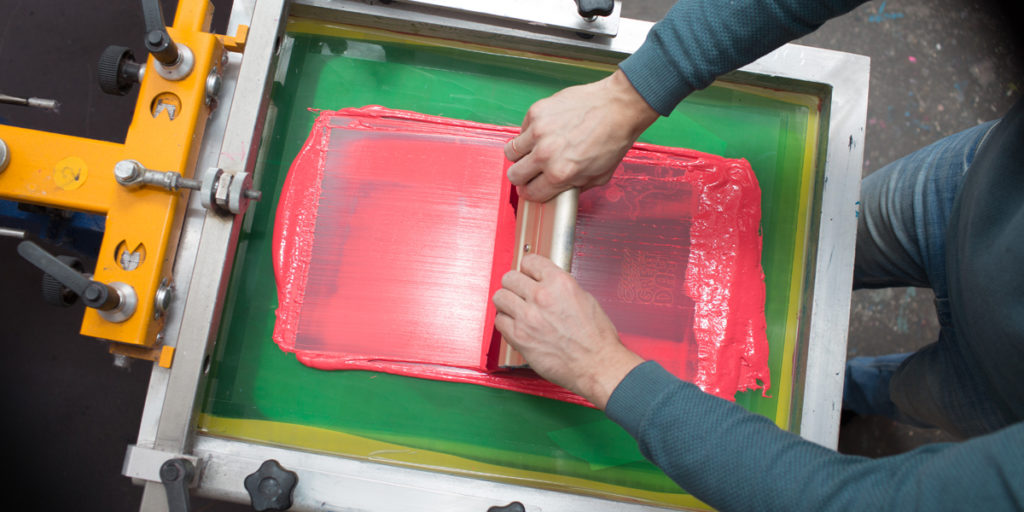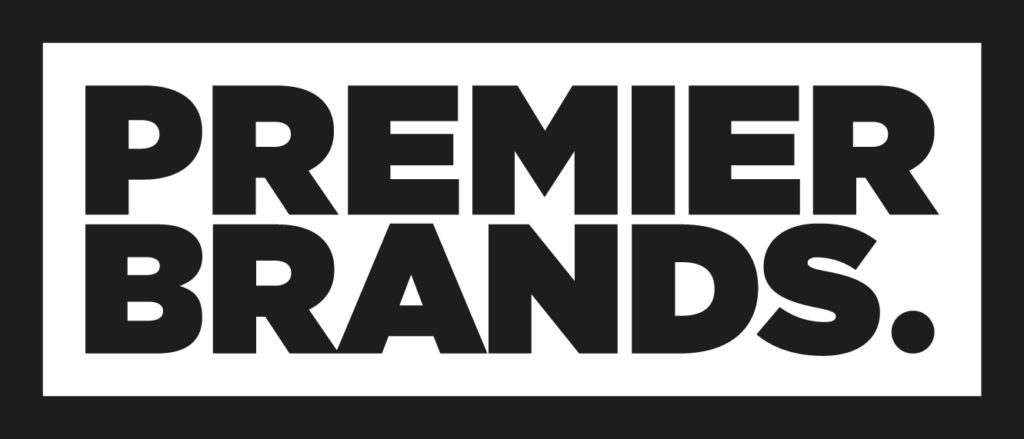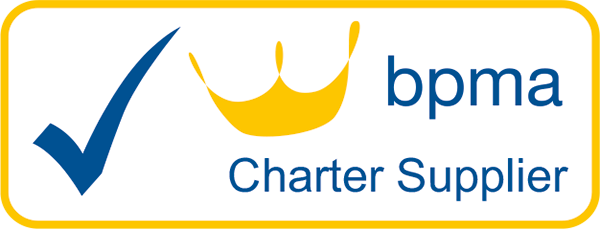As print requirements have become more intricate and complex over time, so too has the technology required to apply it. These technologies offer the possibility for businesses and individuals to apply bespoke branding and personalisation to nearly every type of product or material you can imagine. Perhaps none more so than laser engraving. In this article, we explore how laser engraving works and how laser cutting works and how it can be applied to a range of materials.
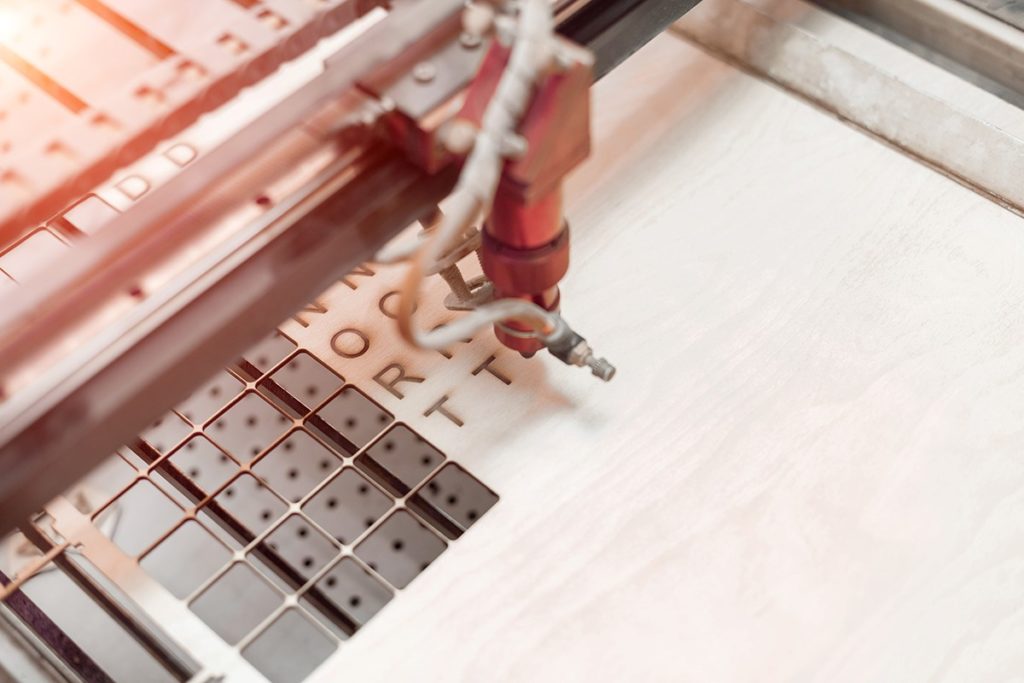
What is laser engraving?
Laser engraving works by using a beam of concentrated light energy to discolour, engrave, or vaporise the surface of a material.
The laser beam targets a small area of the material or product, known as the focal point. The heat generated by the light energy allows the laser to alter the surface of the material, whilst the focal point ensures it only affects a specified part of the surface.
Due to the accuracy of the laser, it is the perfect way to apply marks like barcodes, serial numbers, logos, and other graphics onto a variety of different products and substrates.
How does laser engraving work?
When engraving, the focused laser beam marks by removing a layer from the surface of the material. A contrast results when the layer is removed and can be adjusted by altering the power of the laser. If the laser contacts the material with more power a thicker layer is removed, and the contrast and texture is altered.
The energy delivered by the laser changes the surface of the material at the focal point. It may heat up the surface and subsequently vaporize the material, or perhaps the material may fracture (known as “glassing” or “glassing up”) and flake off the surface.
Most lasers are connected to a fume extraction system to protect the working environment and make it safer for the user.
What is the difference between Laser Etching and Laser Engraving?
The main difference between these techniques is the depth of the mark. As the depth of the laser-etched mark increases, it is often considered engraving, so the main difference between laser engraving and laser etching is how deep the laser penetrates the material.
| Laser Etching | 0.0001 in. Depth |
| Laser Engraving | 0.0001 – 0.005 in. Depth |
| Deep Laser Engraving | > 0.005 in. Depth |
What is Vector Engraving?
Vector engraving follows the line and curve of the pattern to be engraved, much like a pen-based plotter draws by constructing line segments from a description of the outlines of a pattern.
Vector engraving is generally used when working with flat surfaces. It is smoother and much quicker than raster engraving because it is not engraving individual pixels and is continuously engraving.
What is Raster Engraving?
A raster file is a bitmap, made up of a series of pixels. The image is engraved by the laser machine line by line, point by point, similar to the way in which an inkjet printer applies ink, but instead of ink being applied, the material is removed pixel by pixel by the laser.
What are the different types of laser engraving machines?
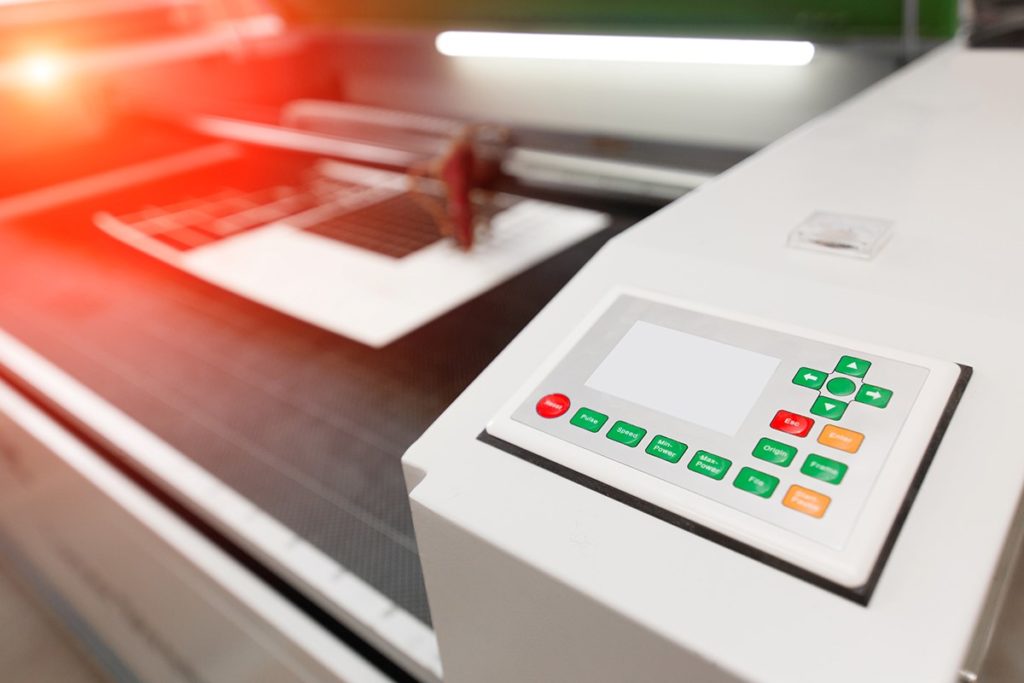
There are two types of laser engraving systems we use at Premier Impressions: CO2 laser engraving machines, and Fibre laser marking machines. Each machine has a unique range of capabilities and is chosen based on the preferences of the printed output.
CO2 Laser engraving machines
This type of machine is best used on coated metal, wood, glass, leather, and acrylic. Modern CO2 machines produce the laser beam in a sealed glass tube which is filled with gas, usually carbon dioxide. A high voltage flows through the tube and reacts with the gas particles, increasing their energy, in turn, producing light.
Fibre laser marking machines
Fibre laser marking machines create a beam which is amplified within engineered glass fibres. Fibre laser marking machines create a high-intensity laser beam which can be much stronger than a CO2 laser.
Fibre lasers pump light from what is called laser diodes. These diodes emit light that is sent into the fibre-optic cable. Optical components located in the cables are then used to generate a specific wavelength and amplify it. The resulting laser beam is shaped and released.
CO2 vs Fibre laser machines
Both laser types have their own pros and cons. Using a CO2 laser is the best choice when choosing to cut materials thicker than 6mm. This is because the wavelength of a fibre laser is better suited towards cutting thinner materials and metals, so whilst you could still use either laser, the fibre laser will operate more slowly on the thicker material.
Fibre lasers are essentially the preferred option for engraving metal products and component parts, are perfect for delicate, accurate work, are low maintenance and have very low power requirements. Most fibre lasers possess over 100,000 operating hours before any maintenance is needed.
Co2 lasers are the most common type of laser due to their lower cost and can engrave and cut a wider range of products. This makes them an ideal choice for the personalised gift and sign making industry.
Advantages of using laser engraving
A laser engraving machine doesn’t touch the material itself, rather it uses heat delivered through a beam of light to mark the material. This ensures it does not damage the surface of the product, the way other methods can.
Due to the accuracy and precision of the laser beam, it is possible to create highly detailed engravings without limiting you to simplifying your designs to fit specifications.
Laser engraving is one of the safest and most sustainable methods of engraving as it uses heat to remove layers rather than using chemicals that can be harmful to the environment.
What products and materials can be laser engraved?
There are a huge range of products that can be laser engraved. Previous projects we have worked on include chopping boards, industrial component parts, and personalised gifts. To see some of the previous products we have worked with, check our laser engraving service page on our website.
We can provide laser engraving services on a wide range of materials including:
- Wood
- Rubber
- Card
- Leather
- Stainless Steel
- Aluminium
- Brass
- Copper
- Slate
- Acrylic
If you are looking to have another type of product or material engraved, then don’t hesitate to contact us and we’ll be happy to help.
What is laser cutting?
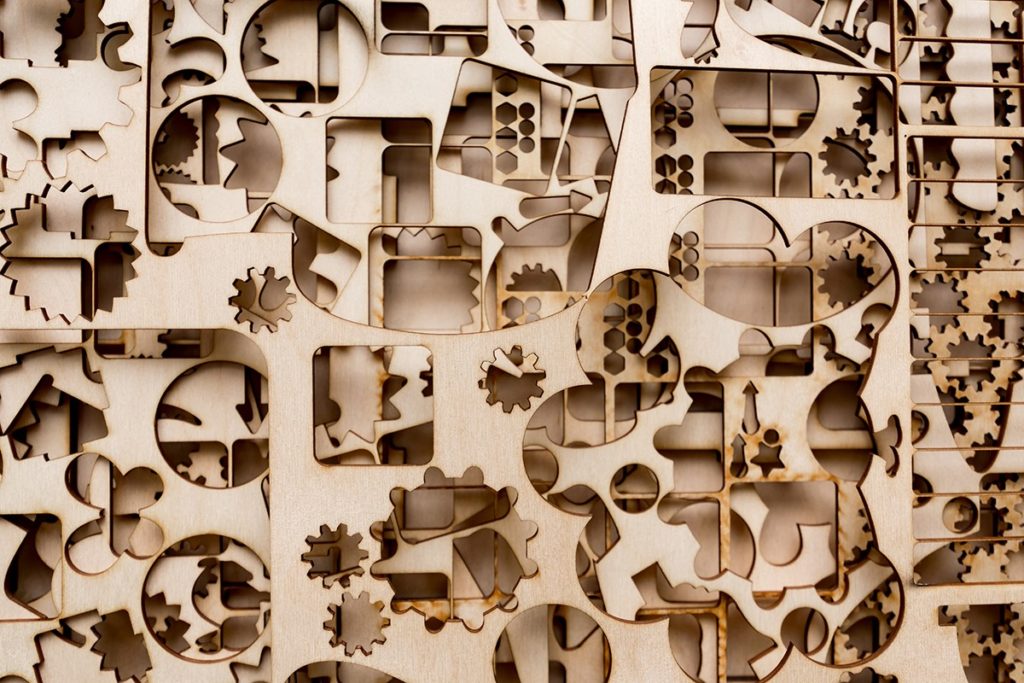
Laser cutting is a type of thermal separation process. The laser beam hits the surface of the material and heats it so that it melts or completely vaporises. Once the laser beam has completely penetrated the material at one point, the actual laser cutting process begins. The laser system follows the selected path and separates the material in the process.
The large range of materials suitable for processing is one of the biggest advantages of laser cutting. The process is highly accurate, and the processing costs are low.
Materials suitable for laser cutting include :
- Acrylic
- Rubber
- Polycarbonate
- Polyethylene
- Polyester
- Polypropylene
- Polystyrene
- Foam
- Wood
- Paper
- Card
- Leather
- Cork
If you would like to know more about the services we provide, please contact us. We will be happy to talk you through your needs in more detail.
